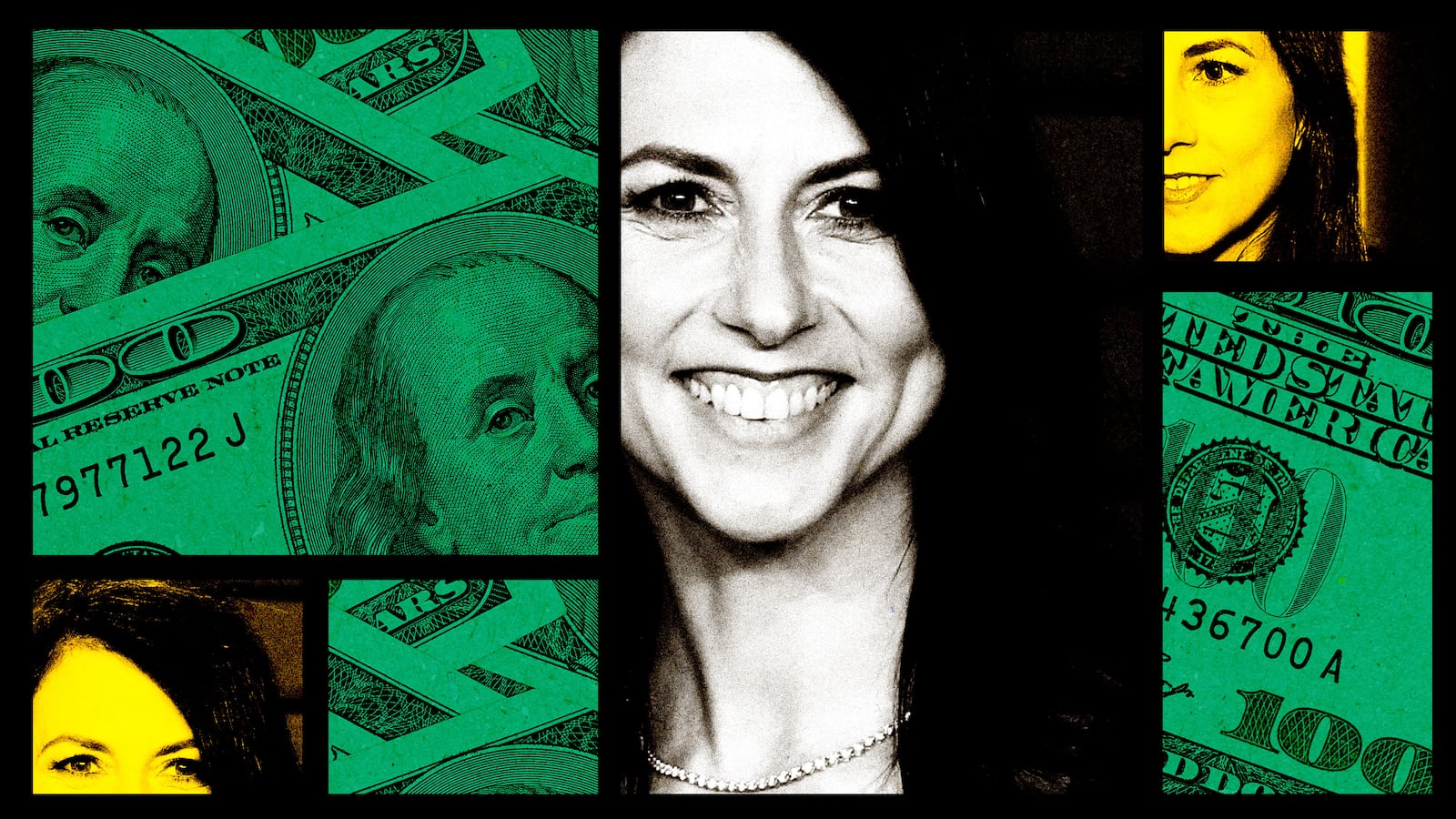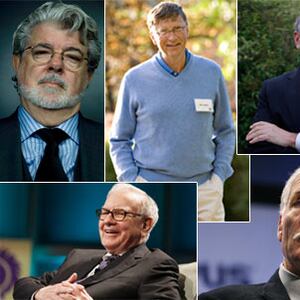In many ways, MacKenzie Scott is Andrew Carnegie’s virtuous foil. The duo offers a striking contrast. Yet, Carnegie, despite being a far more enthusiastic capitalist, may be the philanthropist who better models how philanthropy can challenge the power of capitalism.
Carnegie is the nineteenth-century empire-builder who celebrated capitalism and believed in the superior merit of those with the discipline and intellect to accumulate great fortunes. Scott is the wealthiest woman in America today, in part due to her efforts to help ex-husband Jeff Bezos found Amazon, but as an indirect beneficiary of the business’s explosive growth. Where Carnegie believed wealthy men could bring “superior wisdom, experience, and ability” to use money for causes that benefited poor people “better than they would or could for themselves,” Scott’s perspective on wealth is far more self-effacing. Scott credits her immense wealth not to the visionary leadership of Amazon (and certainly her ex-husband, Jeff Bezos) but to “a collective effort” that was “enabled by systems in need of change.” Scott believes “it would be better if disproportionate wealth were not concentrated in a small number of hands, and that solutions are best designed and implemented by others,” particularly people from historically marginalized communities who have suffered oppression based on race, gender, sexual and gender identity.
In their respective rhetoric about wealth and philanthropy, one philanthropist’s narrative rings harsh, the other more sweetly, to our contemporary ears. Carnegie comes across as the evil industrial baron who believed wealth conveyed superior ability and exploited millions of workers. Perhaps worst of all, he believed that philanthropy validated his wealth, providing a triumphant culmination of his career. By contrast, when Scott gives her fortune away, she does so with humility and contrition about systemic injustice, ideals that would have no place in Carnegie’s bootstrap philosophy. To Scott, giving is still the ideal use of wealth, but as an act of reparation and compensation that is meant to redeem rather than celebrate her vast fortune.
But Carnegie and Scott are something more complicated than polar opposites, more nuanced than Good Money Witch and Wicked Money Goblin. They share several intriguing points of convergence: both were among the wealthiest people of their respective times; both published manifestos about the relationship between wealth and giving, devoting time and thought to identifying their beliefs and then sharing them with the public. The combination of public theorizing backed by enormous amounts of donated money makes them, respectively, the most influential philanthropists of the 19th and 21st century Gilded Ages.
Though they reached this conclusion by very different lines of argument, both Carnegie and Scott believed their wealth ultimately did not belong to them and should instead be returned to a broader community through charitable giving. Once in possession of their fortunes, both believed in giving them away, but they held very different beliefs about whether individuals deserved to accumulate massive amounts of wealth. Even in comparing the two, we can find lessons about the limits of philanthropy in directly addressing economic inequality and the need for public policy that limits the power of wealth, rather than the goodwill of philanthropists.
The first lesson we can learn from Scott and Carnegie’s respective approaches to philanthropy is that giving is insufficient as a counter to injustice and inequality. Scott has shown how easy it can be to redistribute cash. Redistributing power is an entirely different and more courageous project. If Scott is our limit case for philanthropy, then she is proof that only a stronger government and social safety net will effectively address poverty and injustice. Whether or not Scott specifically intends to diminish the power of the rich, the point is that philanthropy simply cannot do so, no matter how many billions are donated or how few restrictions donors place on recipients. Philanthropy should take place alongside stronger regulation of wealth, more progressive taxation, and higher wages and rights for working people if it is to provide a net benefit for society.
However, there is something philanthropy can do that no other kind of money can. Though it cannot attack policies that enable the accumulation of wealth, the exploitation of workers, or the entrapment of people in cycles of debt and high costs of living, it can produce alternative spaces where people and communities exist beyond the reach of the market. Philanthropy can create sanctuaries in which we experience an alternative ethos of human worth, where people have an intrinsic—we might call it sacred—value beyond their utility to produce a benefit for others.
The most powerful thing philanthropy can do is liberate spaces and experiences from the profit motive, and make their benefits available to all. Doing so undermines the monopoly power that capitalism incentivizes, capturing goods and turning them into commodities that are only available to those who can purchase them. Despite his zeal for capitalism, Carnegie may be the philanthropist who created one of the most effective counterweights to capitalism in modern society, going at the source of capital’s power by funding a vast network of public libraries. The public library system, while not Carnegie’s sole creation, is among the most important examples of universal spaces that offer grandeur, dignity, and self-determination to everyone, spaces where human beings can interact with one another and the world without engaging in commercial transactions.
Both MacKenzie Scott and Andrew Carnegie treasure books and reading—in fact, both of their lives are defined by different approaches to making books accessible. As an undergrad at Princeton, Scott studied creative writing and later went on to write two novels. The incomparable novelist Toni Morrison was Scott’s mentor, and called her “one of the best students I’ve ever had” and “an extraordinary writer, almost full-blown.” Yet ironically, it is Carnegie the capitalist who liberated books from the marketplace, while MacKenzie’s fortune comes from Amazon’s commodification of books, which made them available to people as customers, not citizens.
In his book Palaces for the People (a title drawn from Carnegie’s vision for his libraries), sociologist Eric Klinenberg quotes a library staffer named Andrew, who describes the humanism that libraries embody, and their direct contrast to commercial spaces:
<p><em>At Starbucks and at most businesses, really, the assumption is that you, the customer, are better for having this thing that you purchase. . . . At the library, the assumption is you already are better. You have [worth] in you already . . . The library is a palace [that] bestows nobility on people who can’t otherwise afford a shred of it. People need to have nobility and dignity in their lives . . . and for other people to recognize it in them, too.</em></p>
Nobility, dignity, and recognition are qualities that undergird our ability to create a more equitable society—and expressions of love for humanity that defines our worth not by our health or productivity, but by our capacities to think, feel, and create.
Since July 2020, MacKenzie Scott has flipped the billionaire script. Prior to her 2019 divorce from Jeff Bezos, Scott maintained a relatively low profile. The limited press she did court, like a 2013 Vogue profile, portrayed her as a down-to-earth, bookish introvert, a mom who drove the couple’s four kids in a Honda minivan and wrote novels in the early morning hours. Since the divorce, the “regular mom” elements of Scott’s brand have deepened. After her divorce from Bezos, Scott married (and has since divorced) a science teacher from her kids’ school, Dan Jewett. On Medium, where Scott publishes essays on giving and social change, Scott’s bio is “Mom, Writer, Advocate.” In several of these essays, Scott has expressed ambivalence, even alienation, from wealth and money, identifying with unglamorous expressions of generosity like “people who offered a couch when someone said they needed a couch.” Scott has openly wrestled with the attention and stature she commands as the wealth-holder with her desire to “de-emphasize privileged voices” and her understanding of philanthropy that includes volunteering and acts of kindness like distributing food to people on the streets or friendly phone calls to the elderly.
We can only speculate about how one of the wealthiest people in the world came to hold such unusual views about money. Her counterparts are more likely to see their wealth as evidence of their superior intellect, work ethic, or some other virtue, even if they acknowledge the role of luck. Perhaps having grown up in an affluent family that declared bankruptcy when she was seventeen, when her father’s investment firm had to close after allegations of “blatant, serious” violations and misappropriating funds by the SEC, demonstrated to Scott that wealth can be poisonous, or at least unreliable. While at Princeton, Scott held waitressing jobs and relied on supportive gifts like a loan from a friend and free dental care when a dentist saw her gluing a broken tooth. These experiences may have demonstrated the enduring power of kindness and care beyond the false security of wealth. However she came to her beliefs, Scott has tried to detach her identity and goals from her net worth.
No wonder, then, that she has given away four times as much money as her peers, and done so in less than three years. Among billionaires with fortunes between $50 and $60 billion, MacKenzie has given away 22 percent of hers, while the next-most-generous person, Phil Knight, has given away just under 6 percent, followed by Charles Koch with approximately 3 percent. According to reporter Theodore Schleifer, Scott has given away money at a faster clip than any living person in history. Inside Philanthropy predicted that if just five other billionaires adopted Scott’s practices, even modestly, another $22.5 billion would go directly to non-profits.
But how Scott gives is as important as how much she gives. Scott does not solicit applications, nor does she require reports and metrics of success. Beginning with her first blog post in July 2020, Scott has emphasized the importance of giving “with full trust and no strings attached.” Scott grasps a connection that has eluded many well-intentioned donors: the giving process reveals the giver’s real values. Even foundations with the most effusive mission statements, proclaiming their solidarity with marginalized populations and their desire to be good partners, considerate of power dynamics, often end up with back-end processes that are time-consuming to navigate. While a certain amount of thoroughness and transparency benefits everyone, non-profit leaders often struggle with reporting requirements that are just slightly different for each funder, or shifting “strategic priorities” that make foundations less transparent and responsive as they figure out what it is the donors care about most in a given cycle.
Giving with no strings attached, as Scott has done, is a refreshing change from fundraising practices that reinforce the power dynamic where donors have total control, even after they’ve agreed to give money to a nonprofit. The humor blog NonProfit AF has over 150 posts about onerous and paternalistic funder practices, all by writer and veteran nonprofit professional Vu Le. The gallows humor posts cover topics like “10 Ways Your Organization May Be An Askhole,” and “FLAIL: The Funding Logistics Aggravation, Incomprehensibility, and Laughability Index.” Le describes the unintended consequences of a foundation asking “exactly how much of each line item [they] pay for. . . . [T]heir line items don’t exactly line up with ours, [so] we have to spend significant time translating our budget into theirs... leading to a funding Sudoku that wastes endless hours.” Even its former advocates have recently come to regret its practices. Hal Harvey, co-author of a handbook on strategic philanthropy, wrote in 2016 that he felt he owed the world an apology after seeing how harmful restricted and prescriptive grants can be, compared with unrestricted gifts that surrender total control to the nonprofit recipients. Restrictions on how gifts can be spent and how organizations have to report them mean that those dollars are never truly given, but merely channeled through nonprofits as proxies for the donors themselves.
That suits many funders just fine, specifically those who, whether explicitly stating it or not, believe that as the people who accumulated large fortunes, they are not just financially but intellectually equipped to determine the best, most helpful, most efficient way of helping people. Carnegie may have stated that he could use his money to benefit the poor better than they would for themselves, but many foundations, from the Gates Foundation to small family outfits distributing gifts of $5,000 per year, have incorporated that principle into their methods of giving.
As with arguments against expanding public assistance programs, the fear that “someone might take advantage who doesn’t deserve it” results in serious barriers to entry at the expense of actually helping people. Scott uses a team of advisers to perform this due diligence, relying on consulting firm Bridgespan to identify organizations that effectively address a community’s needs and compile “thousands of pages of data analysis on community needs, program outcomes, and each non-profit’s capacity to ab- sorb and make effective use of funding.” Before Scott signs off on her no-strings-attached support, there is a lot of behind-the-scenes research—but, happily, the recipients are not aware that this research is taking place or pressured to produce new reports or talking points to convince the prospective donors. That burden is entirely on Scott and her team.
All of this makes MacKenzie Scott’s giving profoundly refreshing. As writer Vanessa Bee put it, Scott is “laying waste to the . . . idea that giving *has* to take forever and that your greedy, adoration-dependent little mind *has* to somehow be best suited to control every effort you fund.” Financial journalist Theodore Schleifer calls her “the singular force behind what I believe to be the most fascinating, even radical experiment in philanthropy today.” The scale, speed, and method of Scott’s giving invert a deeply entrenched power dynamic. Scott emphasized in one post that her gifts are “paid upfront and left unrestricted in order to provide them with maximum flexibility,” and in another, “I believe the gifts will do more good if others are free from my ideas about what they should do.” Her giving has propelled the term “trust-based philanthropy” into the wider conversation, at least in the nonprofit sector. For a billionaire to say “nonprofits are chronically diverted from their work . . . by burdensome reporting requirements that donors often place on them,” was surreal. Several tranches of funding later, nonprofits now know that a winning-the-lottery-level fantasy is possible: they might get a random phone call that tells them they’re receiving a large sum, to spend wherever they believe it would do the most good.
Structural injustice matters to Scott. Her giving has explicitly focused on racial, gender, and LGBTQ+ equity, and the ways those aims intersect with poverty. In contrast to the routine eight- and nine-figure gifts that Stanford or Harvard receive, Scott gave $560 million to historically Black colleges and university and $5 million to tribal colleges. Scott’s first Medium post focused on supporting women, people of color, and LGBTQ+ people, both as the beneficiary communities and as the leaders of the nonprofits receiving gifts from her. Her second post focused on organizations that serve “those most vulnerable,” such as food banks, emergency relief funds, credit and financial services for low-income communities, and debt relief. Scott seems to approach her giving as an avenue of restitution, transferring money that is indefensibly concentrated in the hands of a few wealthy white people, into the hands of communities who suffered the most to generate that same wealth.
One uncomfortable truth about Scott’s giving is that, for all her astuteness about inequality and structural injustice, their giving so far has focused on causes that offset, but do not prevent, the hardships of racism, sexism, homophobia, and capitalism. They have supported human service organizations at the local and national level. There is little to no focus on the causes of poverty through, say, stronger corporate regulation, a higher minimum wage, or supporting unions.
David Callahan, publisher of Inside Philanthropy, wrote in an open letter to Scott, “Your giving may do a lot of good in the short run . . . but it’s not likely to make a dent in our society’s deep inequities,” suggesting that they address head-on problems like lack of worker power, stagnant wages, and the “extractive practices of the financial sector.”
Some of this could be addressed through philanthropic dollars to 501(c)3s (that is, non-partisan and tax-exempt organizations). Callahan lists the National Domestic Workers Alliance, Jobs With Justice, and Americans for Financial Reform, among others—but the endgame is political action in the form of stronger regulations, higher wages, and breaking monopolies. To be fair, Scott may be giving money more quietly to political action groups or electoral campaigns. In one of her early giving tranches, she made gifts to labor movement nonprofits like the National Domestic Workers’ Association and One Fair Wage, but she has announced little in that vein since. But a truly ballsy approach to structural inequality would be dumping a billion dollars into union strike funds—perhaps even one for Amazon workers. That would be using money to change the conditions that perpetuate inequality, rather than ameliorating their post-facto effects.
In public, Scott’s statements pair a sharp understanding of systemic injustice with inspiring stories of ordinary people acting with generosity and compassion, like a 19-year-old girl who raised $7,000 for mutual aid efforts in her Chicago neighborhood. Someone with a sharper political lens might see such feel-good stories as evidence of systemic failure, overburdening the kindness and labor of individuals to fill in the gaps left by an inadequate social safety net. Instead, in one of her rare mentions of politics, Scott positions nonprofits as a space that transcends partisan conflict: “While political pendulums swing back and forth, redistributing and re-concentrating wealth, we can choose to fund . . . social sector infrastructure organizations . . . ” In other words, Scott knows that the injustices she wants to correct have their origins in political decisions, but her solutions are intentionally apolitical, ducking the question of power.









